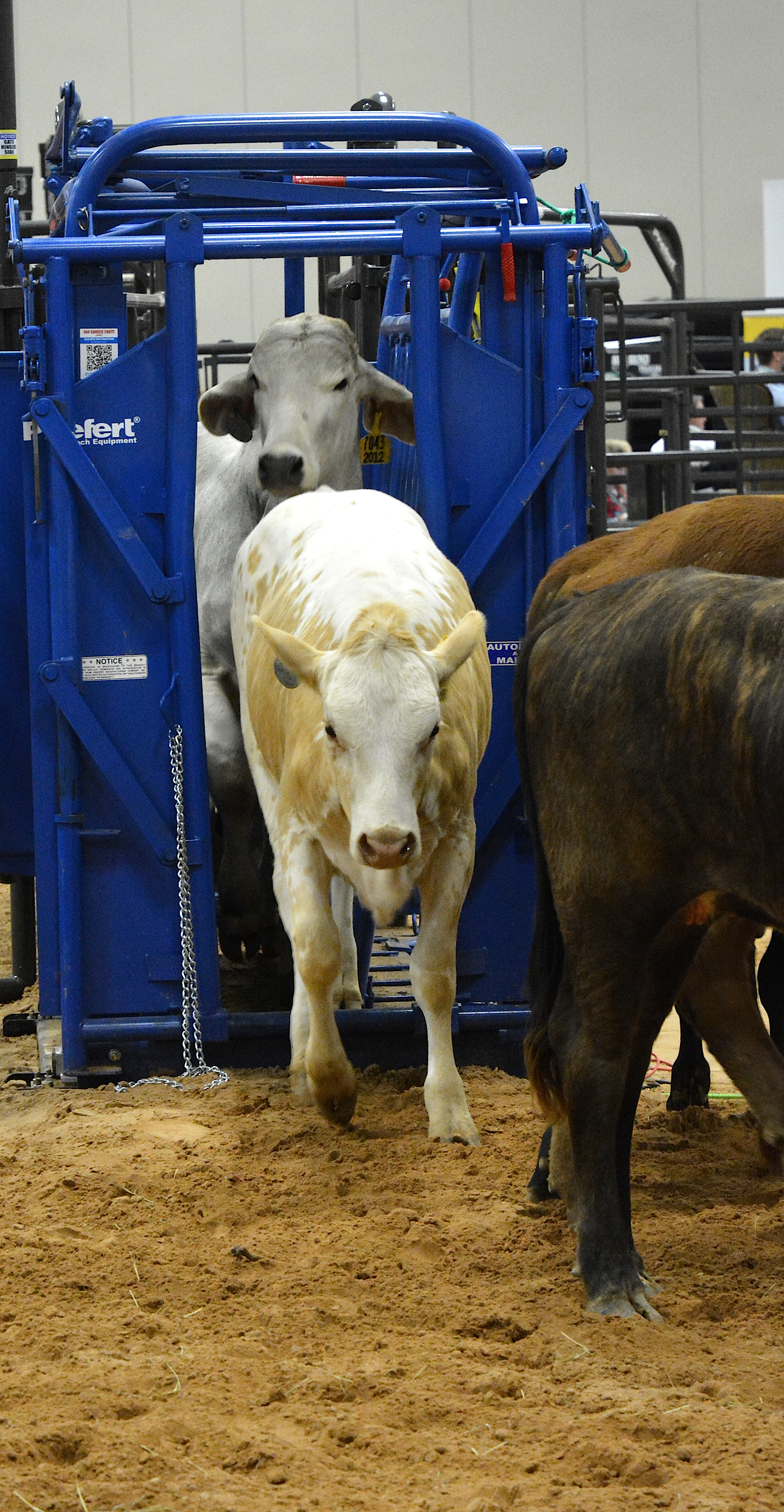Farm & Ranch
[AgriLife Today] Beef cattle producers must be vigilant to mitigate herd health risks

By: Blair Fannin
Writer: Blair Fannin, 979-845-2259, [email protected]
Contacts: Dr. Joe Paschal, 361-265-9203, [email protected]
Dr. Tom Hairgrove, 979-845-5419, [email protected]
SAN ANTONIO – Beef cattle producers should be observant when conducting annual health vaccination protocols on their cattle, according to Texas A&M AgriLife Extension Service experts.
Though not a statewide threat, the fever tick has resulted in some herds in far South Texas to be subject to a quarantine zone. This topic, as well as proper vaccination protocol and techniques, were discussed at the recent Texas and Southwestern Cattle Raisers Association Convention in San Antonio.
“It’s a one-host tick and we can use the cow as a control method. Right now, we can dip or spray the cow. If producers or veterinarians see ticks on cattle that are unusual, even if they are not, they are encouraged to collect those ticks and put them in a little bottle of isopropyl alcohol and send it to Texas Animal Health Commission veterinarians.”
Paschal said if they are identified as fever ticks, “we need to know where they are coming from and get a handle on them.”
“More than 99 percent of the time they are going to be common ticks, and we are going to know what they are,” he said. “There are some things to look for, and they are very easy to take off the animal. They are typically not very deep and not very colorful. When you pull a tick off and put it in your hand, it starts crawling off pretty fast. These ticks do not. They are very slow.”
The technical name for Texas cattle fever is bovine babesiosis, which relates to the organisms that infect the red blood cells of cattle. It is their destruction of the red blood cells that results in anemia, fever and death.
To learn more, AgriLife Extension experts recommend using Tick App, a free smartphone application available at http://tickapp.tamu.edu, and the Texas Animal Health Commission’s website at http://www.tahc.texas.gov/regs/code.html for information on tick treatment options, tick quarantine and associated regulations, as well as the latest updates on current quarantines.
(Click here to listen or download audio report)
Meanwhile, because of a case in Florida, though now eradicated by animal health officials in that state, screwworm is still something producers should watch for. Dr. Tom Hairgrove, AgriLife Extension program coordinator for food and livestock systems in College Station, said watchfulness is key.
“We still need to be very observant,” Hairgrove said. “It’s a maggot and will feed on live flesh in animals. If you see maggots in a live animal, take some of those maggots, put them in isopropyl alcohol and send them to TAHC (veterinarians). We want to get ahead of it. With the Florida outbreak, it might have been around a while on some small animals and was missed. It could have been going on a lot longer than most people thought.”
Hairgrove said this helps with surveillance and helps keep a record of where the samples are coming from.”
Hairgrove said he also advises beef cattle producers to develop a relationship with a local veterinarian.
“Sit down with your local practitioner,” he said. “Develop a good herd health program. A vaccination is just like insurance. We are just trying to mitigate against risk.”
-30-
Find more stories, photos, videos and audio at http://today.agrilife.org
Farm & Ranch
Hazards of Backyard Poultry

By Barry Whitworth, DVM
Having backyard poultry is a popular agriculture enterprise. According to the United States Department of Agriculture, 0.8 percent of all households in the United States have chickens. People keep chickens for a variety of reasons with table eggs being one of the more common reasons.
Unfortunately, some of these poultry producers are not aware of the hazards that come with keeping poultry because many times they carry pathogens but appear healthy.
Chickens are carriers of several zoonotic diseases. These are diseases that can be passed from animals to humans. According to a recent survey in Pennsylvania, a majority of backyard poultry producers were aware of the dangers of avian influenza. However, this study also revealed that far fewer producers were aware of the risk of possible exposure to Salmonella and Campylobacter.
The lack of knowledge about the hazards of raising poultry likely contributes to the continued issues of Salmonella outbreaks associated with backyard poultry. In 2023, the Centers for Disease Control and Prevention reported 1,072 illnesses of Salmonella linked to backyard poultry, and 272 of those patients required hospitalization. Oklahoma reported 43 individuals with the disease.
To read more, pick up a copy of the April issue of NTFR magazine. To subscribe by mail, call 940-872-5922.
Farm & Ranch
Ag Elsewhere: Wyoming

By Tressa Lawrence
Babies are tucked away in every nook and cranny. Many ranchers across Wyoming have baby animals popping up all over this time of year.
Farm & Ranch
Ag Elsewhere: Montana

By Lindsey Monk
Another load of grain in to keep feeding the calves until the green grass can really start popping.
-

 Country Lifestyles1 year ago
Country Lifestyles1 year agoScott & Stacey Schumacher: A Growth Mindset
-

 Equine7 months ago
Equine7 months agoThe Will to Win
-

 Country Lifestyles7 years ago
Country Lifestyles7 years agoStyle Your Profile – What your style cowboy hat says about you and new trends in 2017
-

 Country Lifestyles4 years ago
Country Lifestyles4 years agoAmber Crawford, Breakaway Roper
-

 HOME7 years ago
HOME7 years agoGrazing North Texas – Wilman Lovegrass
-

 Country Lifestyles7 years ago
Country Lifestyles7 years agoDecember 2016 Profile, Rusty Riddle – The Riddle Way
-

 Country Lifestyles8 years ago
Country Lifestyles8 years agoJune 2016 Profile – The man behind the mic: Bob Tallman
-

 Outdoor9 years ago
Outdoor9 years agoButtercup or Primrose?






